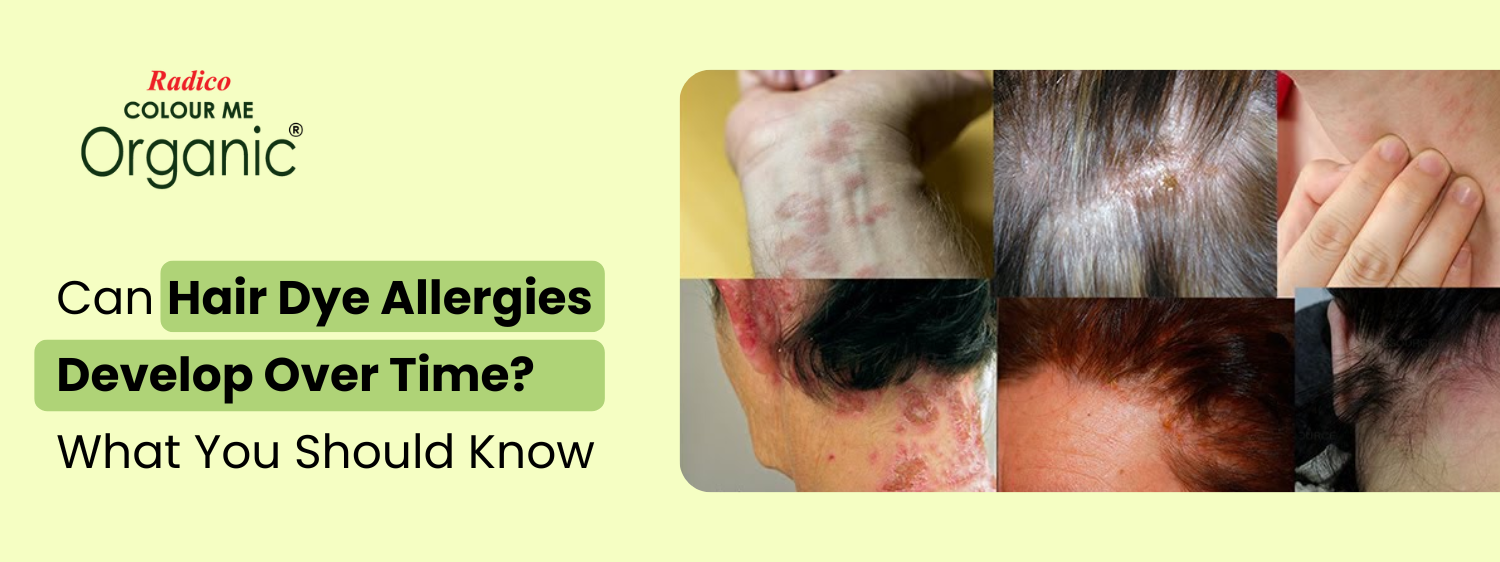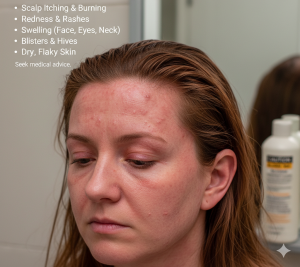
Can Hair Dye Allergies Develop Over Time? What You Should Know

Yes, hair dye allergies can absolutely develop over time, even if you’ve been using the same product for years without any issues. This phenomenon, known as sensitization, occurs through repeated exposure to harsh chemicals found in conventional hair dyes, making it a growing concern for millions of hair color users worldwide.
Understanding Hair Dye Sensitization
Allergic reactions to hair dye don’t always appear immediately. Your immune system can tolerate a chemical for months or even years before suddenly recognizing it as a threat. Most cases of hair dye allergies are caused by para-phenylenediamine (PPD), a potent chemical allergen found in most permanent and semi-permanent hair dyes. When PPD is applied to your scalp, it undergoes oxidation and binds to skin proteins, triggering an immune response in sensitized individuals.
Research shows that sensitization from PPD can occur at any age and depends mainly on cumulative exposure to the allergen. Studies indicate that 71% of patients affected by hair dye allergies are aged older than 40 years, likely because they’ve been coloring their hair for decades to cover gray hair. The more frequently you use chemical hair dyes, the higher your risk of developing an allergy over time.
Common Symptoms of Hair Dye Allergies

Hair dye allergy symptoms typically appear within 24 to 72 hours after application in previously sensitized individuals. The most common signs include intense itching of the scalp, redness and swelling around the hairline, forehead, eyelids, ears, and neck. Many people experience burning or stinging sensations, blistering, dry and cracked skin, and in severe cases, symptoms can escalate to hives, throat tightness, difficulty breathing, and even anaphylaxis.
One documented case involved a woman who had been using the same hair salon and hair dye for many years when she suddenly developed anaphylaxis, experiencing throat tightness and trouble breathing shortly after application. These severe reactions highlight why understanding and preventing hair dye allergies is crucial for regular users.
Why Chemical Hair Dyes Cause Sensitization
Permanent hair dyes work by penetrating the hair shaft using ammonia and hydrogen peroxide, along with aromatic amines like PPD that act as color developers. While approximately 80% of PPD that penetrates the skin undergoes acetylation and becomes inactive, the remaining oxidized PPD creates reactive compounds that trigger allergic responses in susceptible individuals. Hairdressers face particularly high risks because of continuous exposure to these allergic substances, making them prone to contact dermatitis and skin sensitization.
The cumulative nature of chemical exposure means that each application increases your sensitization risk, even if you’ve never had a reaction before. Additionally, other ingredients in conventional hair dyes, such as 2-methyl-5-hydroxyethylaminophenol and various aromatic amines, can cause skin irritation and allergic contact dermatitis.
Safe Alternatives for Allergy-Prone Individuals
If you’ve developed a hair dye allergy or want to prevent one, switching to natural and organic hair colours is your safest option. Plant-based hair colors use ingredients like henna, indigo, amla, aloe vera, and chamomile that nourish your scalp while providing beautiful color without triggering inflammatory immune responses. These herbal formulations have shown significantly reduced sensitization rates and much lower skin permeability compared to PPD-containing products.
Organic hair dyes work through a layering process rather than chemical penetration, coating each strand with natural pigments derived from sun-dried roots, leaves, flowers, and barks. This gentle approach not only prevents allergic reactions but also leaves your hair shinier and healthier with the nutritive benefits of plant extracts. For those seeking specific shades, calendula and hibiscus can deepen red tones, chamomile works beautifully for blonde hair, and rhubarb root helps cover gray naturally.
Prevention and Patch Testing
Whether you’re using chemical or natural hair color, always perform a patch test 48 hours before full application. Apply a small amount of the dye to the inside of your elbow, wrist, or behind your ear, cover it with a plaster to keep it moist, and monitor for any redness, itching, or swelling. This simple precaution can prevent severe allergic reactions and help you identify sensitivities before they become dangerous.
Creating consumer awareness about hair dye contact sensitivity and the significance of pre-use sensitivity testing is urgently needed to prevent widespread allergic reactions. If you experience any symptoms during a patch test or while coloring your hair, rinse immediately with cool water and discontinue use.
Making the Switch to Organic Hair Colour
Transitioning from chemical to organic hair colour is easier than you might think and offers long-term benefits for both your health and hair quality. Organic formulations provide lasting color while conditioning your hair with natural ingredients that strengthen rather than damage your strands. Unlike conventional dyes that strip away your hair’s natural oils and proteins, plant-based colours are enriched with antioxidants, vitamins, and minerals that improve hair texture and shine over time.
For individuals who have already developed PPD allergies, organic hair colors represent not just an alternative but often the only safe option for continuing to color their hair. These eco-friendly and sustainable solutions deliver impressive shimmering hair color without the cumulative health risks associated with repeated chemical exposure.
Hair dye allergies can indeed develop over time due to repeated chemical exposure and immune system sensitization, but you don’t have to give up coloring your hair. By understanding the risks, recognizing early symptoms, and choosing natural alternatives, you can continue enjoying beautiful hair color safely and sustainably.
